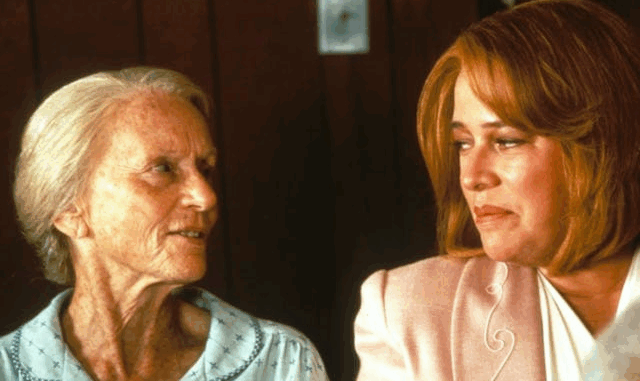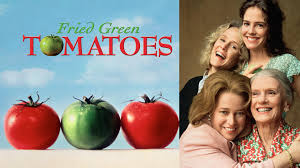
A Turning Point for Women in Film
By the early 1990s, Hollywood was still dominated by male-led films, male directors, and male-centered stories. Then came Fried Green Tomatoes, a film led by four complex women, tackling themes of aging, identity, feminism, and love in all its forms.
But this wasn’t just a good movie with great performances—it became a watershed moment for how women were perceived in Hollywood. It didn’t just challenge stereotypes—it helped reshape them.
Jessica Tandy: Proving Age Has Power
At the time of filming, Jessica Tandy was already 81. Hollywood had long dismissed women of her age as irrelevant, but her performances in Driving Miss Daisy and Fried Green Tomatoes defied that assumption.
She brought dignity, mischief, and wisdom to the screen in ways that hadn’t been celebrated before. Her Oscar win (and multiple nominations) signaled to Hollywood that mature women could carry films, and audiences were eager to see more.
Tandy’s legacy is still felt today, as more roles are written for women beyond 60—and it’s thanks in large part to her trailblazing success.
Kathy Bates: Breaking the Beauty Mold
When Kathy Bates played Evelyn Couch, she defied Hollywood norms in every way. She wasn’t cast as the seductress, the damsel, or the comic relief. She was cast as a real woman—aging, frustrated, trying to find herself again.
Bates proved that talent—not appearance—should define success. Coming off her Oscar-winning turn in Misery, Bates cemented her reputation as one of the finest character actresses of her generation.
She gave hope to women who didn’t see themselves in glossy leading roles, proving that the audience was hungry for authenticity.
Mary Stuart Masterson and Mary-Louise Parker: Quiet Feminism and Subtle Courage

In an industry that often rewards loud statements, these two actresses delivered quiet revolutions through their roles. Their performances as Idgie and Ruth created one of the most moving and tender portrayals of queer-coded love in mainstream cinema at the time.
They didn’t play caricatures. They didn’t over-explain. They showed the world that female love—however interpreted—could be strong, nourishing, and brave.
Even without overt declarations, their story resonated deeply with LGBTQ+ audiences, especially those craving representation that felt honest and respectful.
Behind the Scenes: Women Telling Women’s Stories
Though the film was directed by Jon Avnet, the original novel was written by Fannie Flagg, a Southern writer and actress herself. Her novel celebrated female relationships across generations, and it was her voice that laid the foundation for a cinematic experience where women’s stories were treated with emotional seriousness and narrative centrality.
The cast’s commitment to telling those stories truthfully helped shift industry conversations about what women’s films could look like—and how emotionally rich and financially successful they could be.
A Quiet Revolution That Changed the Industry
The box office success of Fried Green Tomatoes—grossing over $100 million worldwide—proved that there was a substantial audience for films about female friendships, emotional depth, and intergenerational love.
It led to more greenlighting of films like Steel Magnolias, How to Make an American Quilt, and later, The Hours and Little Women—films that centered women not just as love interests, but as fully formed, complex human beings.
Continuing Impact Today
Actors like Frances McDormand, Viola Davis, Olivia Colman, and Sarah Paulson all stand in the lineage of what Fried Green Tomatoes helped reinforce: that substance matters more than image, and that audiences crave authentic stories about women at every stage of life.
The cast of Fried Green Tomatoes didn’t just play memorable roles—they became icons of a subtle but lasting revolution in how women were seen, valued, and celebrated on screen.
Conclusion: The Women Who Lit the Fire
They weren’t trying to start a movement—but they did. Jessica Tandy, Kathy Bates, Mary Stuart Masterson, and Mary-Louise Parker showed the world that female-led films could move audiences, break records, and last generations.
In doing so, they didn’t just bring Whistle Stop to life. They helped change Hollywood itself.
